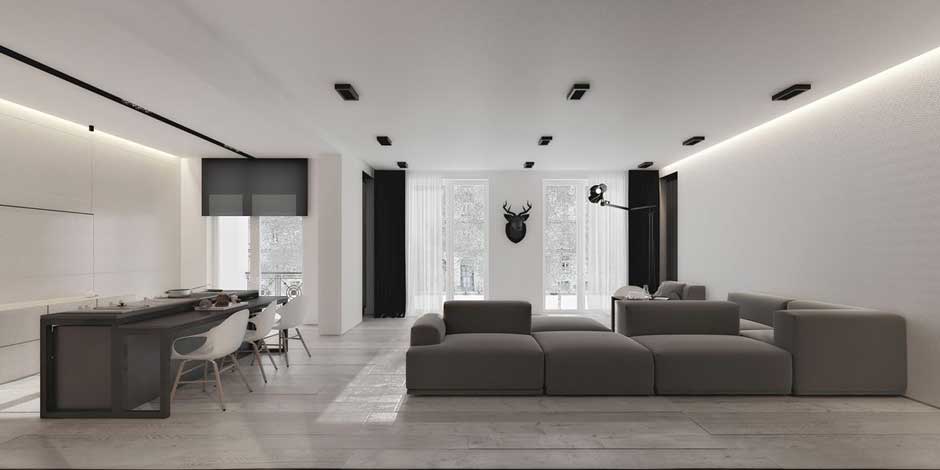Open Spaces Done Right with Minimalist Touches

Simplicity has become the order of the day in contemporary home design, moving away from clutter and instead opting for spaciousness and clear-cut perspectives that appeal to form and function. Minimalistic living does not translate to having plain walls and empty spaces. Instead, it involves organising one’s environment in such a way that only decorative pieces serve a function and each design decision is aimed at calmness rather than disorganisation. The ultimate minimalism in practice is seen in open-plan designs where both zones and sightlines are created without walls.
The Artisanry of Absence
A common misconception about minimalism is that it’s cold and stark, when in fact the opposite is true. When minimalism is done well, it lends cohesion to the design, as there is emphasis on most of the details. Walls become a blank canvas for picture frames or even furniture. Natural colours help highlight colours, while every piece has been purposefully spaced out to avoid the feeling of overcrowding.
However, most broadly, it reduces visual consideration disorder. Therefore, the flat life is so full of idle noise that one wants to go to sleep even with an awakened mind. Moreover, a space with a hint of minimalism is not only aesthetically pleasing but also comfortable.
Organising Movement in Open Spaces
When considering the design of open spaces, one of the major problems is struggling with the idea of having each given space distinctly defined and still engaged in the space without having to construct walls. Zonal purposes can be useful in this situation. There are area rugs, groups of furniture, and even lighting used for the purpose of dividing a space and still keeping it open at the same time.
In environments of this nature, selecting objects that feel soft and nice is key. Consider a slim, overhung shelf rather than a massive bookcase or a thin dining table that has narrow ends.
Integration with External Environment
Maximising the potential of an open-plan space can be done very well by bringing in the elements of nature. Bigger windows, a few strategically positioned openings, and the use of artistic sliding doors help in enlarging the interior space and elevating the atmosphere exponentially. A minimalist scheme is uncharacteristic without ample natural light, as the daylight changes the finishing, smells the wood or the stone, and gives the limited space a feeling of expansion.
This is about taking advantage of good architecture. External and internal spaces are very well merged together by the use of glass sliding doors, for instance. They make the space a spacious enclosure as they do hinge on factors, such as light, add a touch of modernism, and yet do not detract from the minimal sense of proportion within the room.
All About Purposeful Decorating
Such interiors are not devoid of comfort in any single way. Contrarily, the spaces, too, offer a sense of warmth and welcome without having to crowd the space. This also entails the inclusion of a few selected items in the room, more of quality than of quantity. Use materials such as rich textiles and comfortable chairs and also materials like wood that has character without making a mould.
This is another ambitious part. In order to keep an uncluttered, spacious environment, it is necessary to have an allocated space for everything. Why not store from the bottom up—with sliders fitted under the shelves or freestanding shelves with doors?
Decluttered Living
In interior design, these two concepts—plenty of space and minimalism—form a seamless combination. If space, light, and clear goals are emphasised, the house never becomes a confined object that is lived in—it becomes a place where air and space are present. And that’s a kind of luxury one would feel in this world, which is known to be loud and disorderly most of the time.
Bring Simplicity to Life
Have you been wanting to create big changes in your space by just adding a few simple elements? Think of posh sliding doors fitted with blinds and other modern touches added to the existing furniture, especially the simple ones with elements of minimal design. Now’s the time to step into a lifestyle that values clarity over clutter—and design that works as beautifully as it looks.


